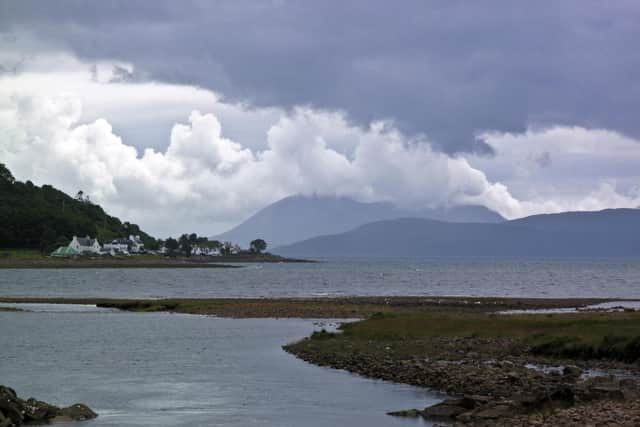Mystery of six skeletons found under Applecross holiday home starts to unravel
The bones were unearthed back in 2015 following the discovery of a human skull under the old office of the Applecross Estate by builders turning the former merchant’s house into tourist accommodation.
Police were called to the property, which dates to around 1820, with archaeologists later unearthing the skeletal remains of six people.
Advertisement
Hide AdAdvertisement
Hide AdAs the excavations unfolded, locals believed long held mysteries of missing people and rumours of murder were behind the finds.


But now, radiocarbon dating has put the skull as being around 2,000-years-old and from the Iron Age.
Cathy Dagg, an archaeologist based on the Scoraig peninsula in Wester Ross, was among those who excavated the site said the case was now getting “very exciting” with a date now pinpointed for the skull.
Ms Dagg said: “The first skull popped up when the builders were there taking the floor up. They stopped work and phoned the police and archaeologists. The first to arrive was the police and it appears they might have taken the skull away with them to Plockton. Then, they appear to have thought better of it and brought it back again.
"We thought we were going to lift a skull but when we got there it became clear there was more. When we got to work, we found another three lower mandibles and two further skull fragments.
"We found bags of bones but the number of lower mandibles and skulls were the main indicators of the number of individuals being more than the original one.
Ms Dagg said that once the first skull was discovered, people in Applecross were coming to the site to share stories about murders and missing people in the area.
Others speculated the skull belonged to Arlene Fraser, the Aberdeenshire housewife who disappeared in the late 1990s, and Renee MacRae, who vanished from Inverness with her young son in 1976. William MacDowell was found guilty of their murders last September. Their bodies have never been found and MacDowell died in prison earlier this month.
Advertisement
Hide AdAdvertisement
Hide AdMs Dagg added: “At first, it did seem like a more modern case and we didn’t know for a long time that we were dealing with something far older.
"The estate agreed to pay for one carbon date and that came back with a mid to late Iron Age date, from 74-234CE. The whole thing suddenly became very exciting.”
Further remains were sent to Professor Ian Armit, now of the University of York, a specialist in the Late Bronze Age and early Iron Age, for analysis. The full findings are due to be revealed by early summer and are likely to determine age, sex and geographical origins of those buried at Applecross.
Ms Dagg said Applecross had been a “major political centre” during the Iron Age with the remains of a broch located a few hundred metres from the burials.
She added: "It’s a very classic broch with carbon dates putting it around 200BC to 200AD , roughly around the same period as the skulls.”
Ms Dagg added that known Iron Age burials on the North West coast were rare, with only two others found at Durness in Sutherland.
Ms Dagg will share the latest findings at a talk hosted by Applecross Heritage Centre in Applecross Hall on Tuesday, February 28 at 7.30pm.
Comments
Want to join the conversation? Please or to comment on this article.